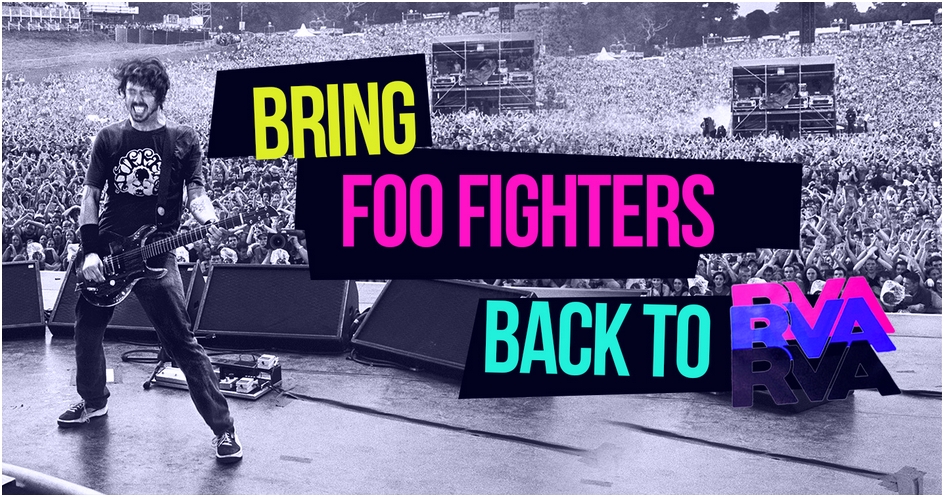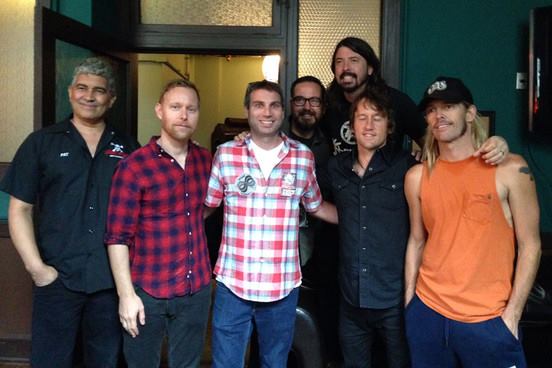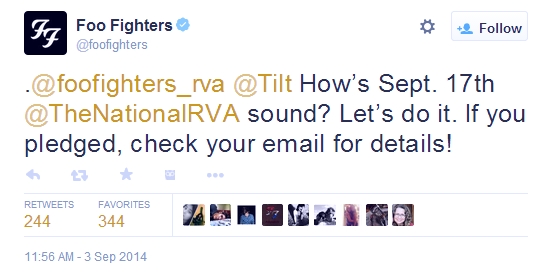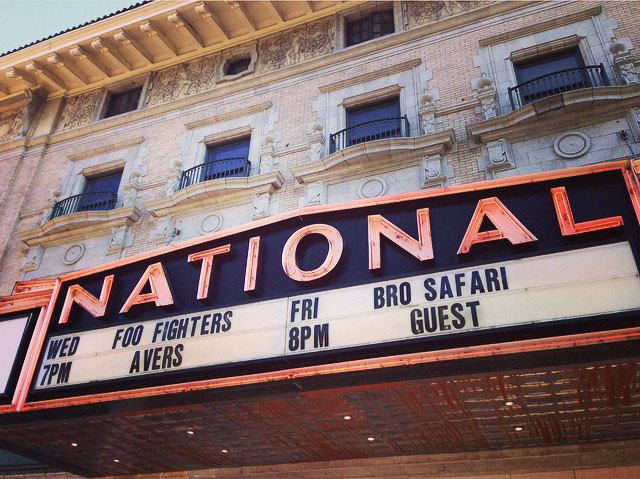How a One-Minute Video Brought the Foo Fighters Back to Richmond
When your favorite band hasn’t played in your town for 16 years, what can you do to persuade them to visit?
If you’re Andrew Goldin, you use a video to sell so many tickets for show that’s not even on the calendar that the band can’t ignore you. And there’s much associations can learn from this video marketing strategy.
Think of your association as a network with channels of distribution.
Content doesn’t market itself. Make sure members and other followers know when and where content is available, and that it’s worth the time to watch/read/listen.
Tell members and other audiences about your content in every way possible. Guide them toward the actions you want them to take after viewing your content.
Here’s how a one-minute video turned into a rock concert:
At the beginning of 2014, Goldin, a freelance creative director and copywriter who at the time was living in Richmond, Va., is a loyal Foo Fighters fan who realized that his beloved band hadn’t played in his city since 1998. So he and friends John McAdorey, Brig White and Lucas Krost created a one-minute video asking fellow fans to purchase $50 tickets to a Foo Fighters concert in Richmond that didn’t exist and wasn’t yet planned, in the hope that the outlay of money, commitment from fans and buzz would convince the band to play once again in Richmond. No problem!
They posted the video to Crowdtilt, a crowdfunding site similar to Kickstarter, where those interested could purchase tickets online and receive updates about the potential show. The plan to bring the Foo Fighters to Richmond was laid out like this:
- Fans pledge to purchase concert tickets on Crowdtilt.
- Their credit cards would be charged only if the Foo Fighters agree to play in Richmond and an actual concert is planned.
- While up to 1,400 phantom concert tickets (totaling $70,000) are sold, Goldin and friends spread the word about their concert wish online.
- Foo Fighters notice the effort and plan a concert in Richmond.
- Rock on!

The video was the centerpiece of the campaign. Just over one minute long, it succinctly and cheekily laid out the above plan. Anyone who views it can easily see the group’s genuine love for the band and their music, and desire to create a memorable experience for Foo fans like themselves.
But creating and uploading the video was only one piece of the campaign. Goldin and friends clearly communicated their goal through a simple website. They created a Twitter account dedicated to the campaign. They also worked with a local radio station to spread the word through on-air mentions, station-sponsored tweets, and through connections station employees have with RCA, the Foo Fighters’ label. In short, the friends created so much buzz through social media, email, and other websites that local and music news media couldn’t ignore their unique effort – and neither could the band.
The Foo Fighters played the crowdfunded show on Sept. 17 at Richmond’s National Theater.

If your association produces video or a TV channel, what can you learn from this campaign?
- It’s not enough simply to produce content. You must push it to the masses through the media channels they use most often.
- Goldin and friends didn’t just upload their video to Crowdtilt and let it languish among the thousands of funding ideas (not to mention the millions of videos on other sites like YouTube, Kickstarter, or Vine). They created an accompanying Twitter account, told their friends, posted on fan-powered Foo Fighters discussion boards, and promoted their cause to local media and rock stations. In short, they talked about the campaign every chance they had, everywhere they could. Associations, by definitions, are networks. Take your video content and work your network to ensure that all of your members, potential members, and other audiences sees it – or at least knows it’s there.
- Tell your masses why your content is worth their time.
- One hundred hours of video footage is uploaded to YouTube alone every minute. There are only 24 hours in a day. Clearly, people must make choices when deciding what, if anything, to watch online. Goldin and friends kept their video short, and posted cut-and-dried information around it that outlined their goal of bringing the Foo Fighters to Richmond in a no-risk, win-win way. They also made sure the media mentioned that this type of crowd-funded concert had never happened before. That hook made people want to learn more, even if they weren’t Foo fans or local to Richmond. Tell your audience what’s in it for them. Not every video, newsletter or booklet your association produces is going to appeal to every member, but if you tell them upfront what the content is about, you are more likely to guide them into at least checking it out before they make a decision to move on to the next item.
- Clearly state the benefit of engaging with your content.
- Within their video, on their Crowdtilt site, and in every other piece of online chatter, Goldin and friends clearly laid out why people should pay attention and join their cause: Fun. No risk of losing money. Being part of an unprecedented effort. These three reasons to watch the video and take action. When your association produces content, tell your audience why they should listen and what they should do afterward so they don’t have to guess your intentions. The average working American sees thousands of commercial messages, sends and receives 121 emails, and spends 11 hours with digital media each day. Add in any interpersonal communication, whether by text or in person, and you can see why it’s a good idea to be direct about your message and clear about your desired outcome with your audience.
- Once they’ve engaged with your content, keep them coming back for more.
- The Foo Fighters RVA Twitter account (@FooFighters_RVA) is still going strong. As of late fall 2014, the account was publicizing interviews with the Foo Fighters and requests from the band for their next concert destination. Although the Richmond show is over, the account and other crowdfunded campaigns are still serving as online touch points for band-related conversation as well as other topics important to rock aficionados.
Keep the buzz going about a one-time or annual event once the event has passed to keep members involved and excited about other association programs. Many associations pick up communication efforts only when it’s time to promote a specific event. These associations miss the opportunities to engage people further who were excited about the event in ways that last longer than a conference or luncheon, and they forego ways to promote themselves further: Goldin has been invited to speak at SXSW Music in March 2015 about his crowdfunded concert experience.
Producing a video isn’t the end of content creation; it’s one step along the journey toward your goal for that content – whether your objective is increased membership, educational outcomes, or a rock concert in your hometown. Videos don’t market themselves. It’s up to your association to ensure your network knows it’s available, that it’s worth the time spent watching it, and most importantly, that there is a reason behind the production of the video. Tell your members and other audiences about your videos in every way possible. Guide them toward the actions you want them to take after viewing your videos.
Conclusion
Videos tell stories that can lead to crazy outcomes like an unplanned rock concert. But for that to happen successfully, you must first tell the story of your video.
Want to learn more about crowdfunding and online promotion? Check out Goldin’s scheduled session at SXSW Music, March 17-22 in Austin, TX.
Update, 6/23/15: Goldin and team won Bronze at the Cannes Lions International Advertising Awards for their campaign to bring the Foo Fighters to Richmond! Congratulations to the team!




